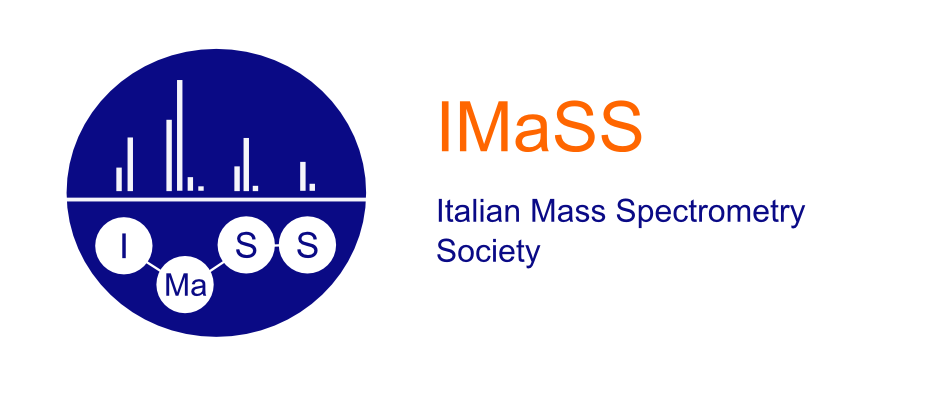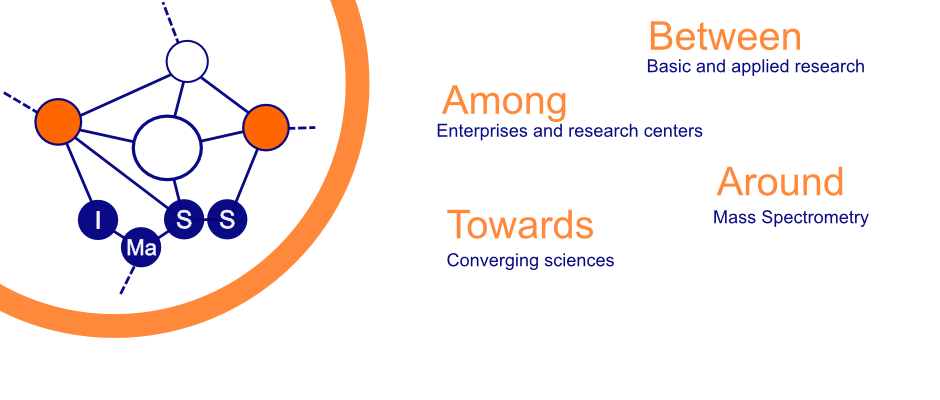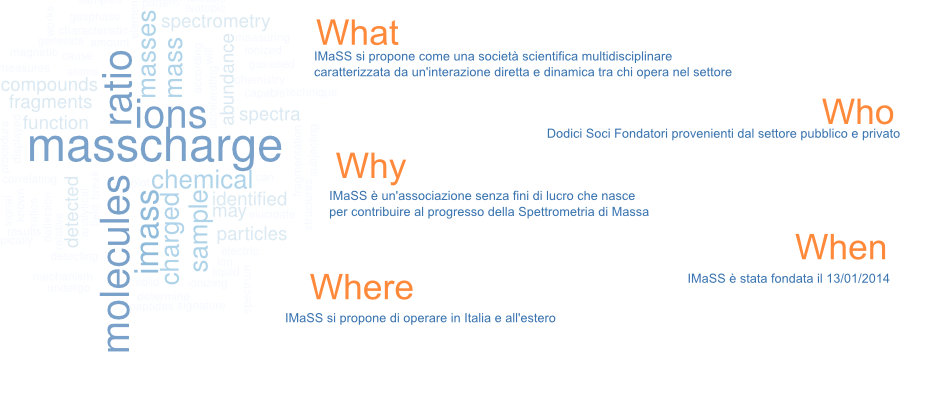Feed aggregator
Mechanistic Insights Into the Dissociative Photoionization Pathways of Ethyl Propionate: A Combined Experimental and Theoretical Approach
Ethyl propionate (C5H10O2, EP) has been extensively studied in the fields of biofuels and atmospheric chemistry. However, its vacuum ultraviolet (VUV) photoionization has not been investigated. This study examines the photoionization process of EP using tunable VUV synchrotron radiation, coupled with a reflectron time-of-flight mass spectrometer. This method yielded the photoionization mass spectrum of EP and photoionization efficiency (PIE) spectra of 10 identified fragment ions (i.e., C4H7O2 +., C3H7O2 +., C3H6O2 +., C3H5O2 +., C3H6O+., C3H5O+., C3H4O+., C2H5O+., C2H5 +., and C2H4 +.). The results, interpreted with the aid of high-accuracy theoretical calculations, conclude possible formation mechanisms for each fragment ion. In the dissociation pathway of EP's cation, intramolecular hydrogen shifts and bond cleavage are the predominant processes. The C3H7O2 +. and C2H4 +. reaction channels do not arise from one-step bond cleavage, but their reaction energy barriers are influenced by product energy, making them comparable to direct reaction channels. The active reaction sites within the molecules are elucidated using Laplacian bond order (LBO). Rate constants are calculated using RRKM theory, which confirms the kinetic factors governing the EP reaction process. This study provides a detailed understanding of the photoionization and dissociation of the main ions of EP within the 9.35–15.50 eV photon energy range.
Zn(II) Affinity and Structural Conformations of 2His‐2Cys Zinc Finger‐Like Motif Peptide Determined by Ion Mobility–Mass Spectrometry and PM6 Molecular Modeling
This study focuses on investigating the conformational structure and zinc(II) affinity of a zinc finger-like motif (ZFM) peptide with the sequence acetyl-His 1 -Cys 2 -Gly3-Pro4-Gly5-His 6 -Cys 7 , where bold highlights the potential zinc(II) binding sites. Zinc fingers are crucial protein motifs known for their high specificity and affinity for zinc ions. The ZFM peptide's sequence contains the 2His-2Cys zinc-binding sites similar to those in natural zinc finger proteins but without the hydrophobic core, making it a valuable model for studying zinc(II)–peptide interactions. Previous research on related peptides showed that collision cross sections and B3LYP modeling predicted that the His-2Cys-carboxyl terminus coordination of zinc(II) was more stable than the 2His-2Cys. Employing a comprehensive approach integrating ion mobility–mass spectrometry and theoretical modeling techniques, various zinc(II) binding modes of the ZFM have been thoroughly compared to ascertain their influence on the competitive threshold collision-induced dissociation method for measuring the relative gas-phase Zn(II) affinity of the ZFM peptide. The measured Zn(II) affinity of ZFM is greater than those measured recently for two peptides with similar primary structures, acetyl-His 1 -Cys 2 -Gly3-Pro4-Gly5-Gly6-Cys 7 and acetyl-Asp 1 -His 2 -Gly3-Pro4-Gly5-Gly6-Cys 7 , indicating the preference for the His1-Cys2-His6-Cys7 side groups for coordinating zinc(II) over the His-2Cys-carboxyl terminus or Asp-His-Cys-carboxyl terminus in these related heptapeptides.
Issue Information
No abstract is available for this article.
Mass Spectrometry‐Based Proteomics Technologies to Define Endogenous Protein‐Protein Interactions and Their Applications to Cancer and Viral Infectious Diseases
An intricate network of protein assemblies and protein-protein interactions (PPIs) underlies nearly every biological process in living systems. The organization of these cellular networks is highly dynamic and intimately tied to the genomic and proteomic landscapes of a cell. Disruptions in normal PPIs can impair cellular functions and contribute to the development of human diseases. In recent years, targeting PPIs has emerged as an attractive strategy for drug discovery. Consequently, the identification and characterization of endogenous PPIs—those occurring naturally under physiological conditions—has become crucial for unraveling the molecular mechanisms driving human pathology and for laying the groundwork for novel diagnostics and therapeutics. Owing to numerous technological advancements, mass spectrometry (MS)-based proteomics has transformed the study of PPIs at the systems-level. This review focuses on proteomics approaches that enable the characterization of physiologically relevant endogenous interactions, spanning complex-centric to structure-centric analyses. Additionally, their applications to define native PPIs in the contexts of cancer and viral infectious diseases is highlighted.
Special issue of Dr. Veronica Bierbaum for her contributions to fundamental chemistry in mass spectrometry
My journey in life and chemistry
Periodic trends in the hydration energies and critical sizes of alkaline earth and transition metal dication water complexes
This review encompasses guided ion beam tandem mass spectrometry studies of hydrated metal dication complexes. Metals include the Group 2 alkaline earths (Mg, Ca, Sr, and Ba), late first-row transition metals (Mn, Fe, Co, Ni, Cu, and Zn), along with Cd. In all cases, threshold collision-induced dissociation experiments are used to quantitatively determine the sequential hydration energies for M2+(H2O) x complexes ranging in size from one to 11 water molecules. Periodic trends in these bond dissociation energies are examined and discussed. Values are compared to other experimental results when available. In addition to dissociation by simple water ligand loss, complexes at a select size (which differs from metal to metal) are also observed to undergo charge separation to yield a hydrated metal hydroxide cation and a hydrated proton. This leads to the concept of a critical size, x crit, and the periodic trends in this value are also discussed.
Ion‐molecule studies of energetic oxygen allotropes in flow tubes: O 2 ( v ) , O 2 ( a Δ g 1 ) , O 3 , and O
Starting in the 1960s, flow tube apparatuses have played a central role in the study of ion-molecule kinetics, allowing for immense chemical diversity of cationic, anionic, and neutral reactants. Here, we review studies of oxygen allotropes, excluding ground state O2 ( X 3 ∑ g −), and focusing instead on reactions of cations, anions, and metal chemi-ionization reactions with ground state atomic oxygen (O 3P), vibrationally excited molecular oxygen (O2(v)), electronically excited molecular oxygen (O2 ( a 1 Δ g)), and ozone (O3). Historical outlines of work over several decades are given along with a focus on more recent work by our group at the Air Force Research Laboratory.
Probing gas phase catalysis by atomic metal cations with flow tube mass spectrometry
The evolution and applications of flow tube mass spectrometry in the study of catalysis promoted by atomic metal ions are tracked from the pioneering days in Boulder, Colorado, to the construction and application of the ICP/SIFT/QqQ and ESI/qQ/SIFT/QqQ instruments at York University and the VISTA-SIFT instrument at the Air Force Research Laboratory. The physical separation of various sources of atomic metal ions from the flow tube in the latter instruments facilitates the spatial resolution of redox reactions and allows the separate measurement of the kinetics of both legs of a two-step catalytic cycle, while also allowing a view of the catalytic cycle in progress downstream in the reaction region of the flow tube. We focus on measurements on O-atom transfer and bond activation catalysis as first identified in Boulder and emphasize fundamental aspects such as the thermodynamic window of opportunity for catalysis, catalytic efficiency, and computed energy landscapes for atomic metal cation catalysis. Gas-phase applications include: the catalytic oxidation of CO to CO2, of H2 to H2O, and of C2H4 to CH3CHO all with N2O as the source of oxygen; the catalytic oxidation of CH4 to CH3OH with O3; the catalytic oxidation of C6H6 with O2. We also address the environmentally important catalytic reduction of NO2 and NO to N2 with CO and H2 by catalytic coupling of two-step catalytic cycles in a multistep cycle. Overall, the power of atomic metal cations in catalysis, and the use of flow tube mass spectrometry in revealing this power, is clearly demonstrated.
Recent developments and applications of selected ion flow tube mass spectrometry (SIFT‐MS)
Selected ion flow tube mass spectrometry (SIFT-MS) is now recognized as the most versatile analytical technique for the identification and quantification of trace gases down to the parts-per-trillion by volume, pptv, range. This statement is supported by the wide reach of its applications, from real-time analysis, obviating sample collection of very humid exhaled breath, to its adoption in industrial scenarios for air quality monitoring. This review touches on the recent extensions to the underpinning ion chemistry kinetics library and the alternative challenge of using nitrogen carrier gas instead of helium. The addition of reagent anions in the Voice200 series of SIFT-MS instruments has enhanced the analytical capability, thus allowing analyses of volatile trace compounds in humid air that cannot be analyzed using reagent cations alone, as clarified by outlining the anion chemistry involved. Case studies are reviewed of breath analysis and bacterial culture volatile organic compound (VOC), emissions, environmental applications such as air, water, and soil analysis, workplace safety such as transport container fumigants, airborne contamination in semiconductor fabrication, food flavor and spoilage, drugs contamination and VOC emissions from packaging to demonstrate the stated qualities and uniqueness of the new generation SIFT-MS instrumentation. Finally, some advancements that can be made to improve the analytical capability and reach of SIFT-MS are mentioned.
ISSUE INFORMATION ‐ ToC
Issue Information
No abstract is available for this article.
Thermometer Ions, Internal Energies, and In‐Source Fragmentation in Ambient Ionization
Ionization and fragmentation are at the core of mass spectrometry. But they are not necessarily separated in space, as in-source fragmentation can also occur. Here, we survey the literature published since our 2005 review on the internal energy and fragmentation in electrospray ionization sources. We present new thermometer molecules to diagnose and quantify source heating, provide tables of recommended threshold (E 0) and appearance energies (E app) for the survival yield method, and attempt to compare the softness of a variety of ambient pressure ionization sources. The droplet size distribution and desolvation dynamics play a major role: lower average internal energies are obtained when the ions remain protected by a solvation shell and spend less time nakedly exposed to activating conditions in the transfer interface. Methods based on small droplet formation without charging can thus be softer than electrospray. New dielectric barrier discharge sources can gas-phase ionize small molecules while conferring barely more internal energy than electrospray ionization. However, the tuning of the entire source interface often has an even greater influence on ion internal energies and fragmentation than on the ionization process itself. We hope that this review will facilitate further research to control and standardize in-source ion activation conditions, and to ensure the transferability of data and research results in mass spectrometry.
MS‐Based Glycome Characterization of Biotherapeutics With N‐ and O‐Glycosylation
With the increasing FDA approvals of glycoprotein-based biotherapeutics including monoclonal antibodies, cytokines, and enzyme treatments, the significance of glycosylation in modulating drug efficacy and safety becomes central. This review highlights the crucial role of mass spectrometry (MS) in elucidating the glycome of biotherapeutics that feature N- and O-glycosylation, directly addressing the challenges posed by glycosylation complexity and heterogeneity. We have detailed the advancements and application of MS technologies including MALDI-TOF MS, LC-MS, and tandem MS in the precise characterization of glycoprotein therapeutics. Emphasizing MS-based strategies for detecting immunogenic glycans and ensuring batch-to-batch consistency, this review highlights targeted approaches for glycoprotein, glycopeptide, and glycan analysis tailored to meet the stringent analytical and regulatory demands of biopharmaceutical development.
Erratum—Integrating DFT and CI‐MS Techniques to Assess Benzophenone Derivatives in Food Packaging: Implications for Enhancing Food Quality and Safety
digitalMALDI: A Single‐Particle–Based Mass Spectrometric Detection System for Biomolecules
The development of a real-time system for characterizing individual biomolecule-containing aerosol particles presents a transformative opportunity to monitor respiratory conditions, including infections and lung diseases. Existing molecular assay technologies, although effective, rely on costly reagents, are relatively slow, and face challenges in multiplexing, limiting their use for real-time applications. To overcome these challenges, we developed digitalMALDI, a laser-based mass spectrometry system designed for single-particle characterization. digitalMALDI operates as a near real-time platform that directly samples aerosols, bypassing the need for complex and time-consuming sample preparation. To demonstrate the feasibility of this approach, intact insulin protein was used as a representative target. Results showed that digitalMALDI is capable of detecting 1 pg of insulin protein in single aerosol particles, suggesting that the system has a broad application for disease diagnosis, environmental monitoring, and biosecurity management.
Feasibility of IR‐MALDESI Mass Spectrometry Imaging of PFAS
Perfluoroalkyl and polyfluoroalkyl substances (PFAS) are a class of emerging contaminants that have been in use industrially since the 1940s. Their long-term and extensive commercial use has led to their ubiquitous presence in the environment. The ability to measure the bioconcentration and distribution of PFAS in the tissue of aquatic organisms helps elucidate the persistence of PFAS as well as environmental impacts. Traditional analysis by LC–MS/MS can measure total PFAS concentrations within an organism but cannot provide comprehensive spatial information regarding PFAS concentrations within the organism. In the current study, we used infrared matrix-assisted laser desorption electrospray ionization (IR-MALDESI) to determine the limit of detection (LOD) of several PFAS utilizing a commercial standard mix spotted on mouse liver tissue. The traditional ice matrix and an alternative matrix, 1,8-bis (tetramethylguanidino)naphthalene (TMGN), were explored when determining the limits of detection for various PFAS by IR-MALDESI. The ice matrix alone resulted in a higher response than the combination of TMGN and ice. The resulting LOD for perfluorooctane sulfonic acid (PFOS) on a per voxel basis was 0.16 fmol/voxel. For comparison, zebrafish that were exposed to perfluorooctanoic acid (PFOA), PFOS, and perfluorohexanesulfonic acid (PFHxS) at different concentrations were homogenized, and PFAS were extracted by solid–liquid extraction, purified by solid phase extraction, and analyzed by LC–MS/MS to determine the level of bioaccumulation in the zebrafish. PFOS resulted in the highest level of bioaccumulation (731.9 μg/kg, or 234.2 fg/voxel). A zebrafish that had been exposed to a PFAS mixture of PFOA (250 ng/L), PFOS (250 ng/L), and PFHxS (125 ng/L) was cryosectioned and analyzed by IR-MALDESI. Images could not be generated as the accumulation of PFAS in the sectioned tissue was below detection limit of the technique.
Progress in Tandem Mass Spectrometry Data Analysis for Nucleic Acids
Mass spectrometry (MS) has become a critical tool in the characterization of covalently modified nucleic acids. Well-developed bottom-up approaches, where nucleic acids are digested with an endonuclease and the resulting oligonucleotides are separated before MS and MS/MS analysis, provide substantial insight into modified nucleotides in biological and synthetic nucleic. Top-down MS presents an alternative approach where the entire nucleic acid molecule is introduced to the mass spectrometer intact and then fragmented by MS/MS. Current top-down MS workflows have incorporated automated, on-line HPLC workflows to enable rapid desalting of nucleic acid samples for facile mass analysis without complication from adduction. Furthermore, optimization of MS/MS parameters utilizing collision, electron, or photon-based activation methods have enabled effective bond cleavage throughout the phosphodiester backbone while limiting secondary fragmentation, allowing characterization of progressively larger (~100 nt) nucleic acids and localization of covalent modifications. Development of software applications to perform automated identification of fragment ions has accelerated the broader adoption of mass spectrometry for analysis of nucleic acids. This review focuses on progress in tandem mass spectrometry for characterization of nucleic acids with particular emphasis on the software tools that have proven critical for advancing the field.
Pages
- « first
- ‹ previous
- 1
- 2
- 3




